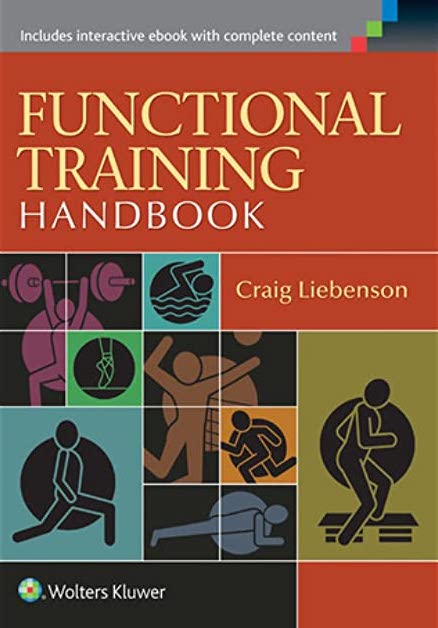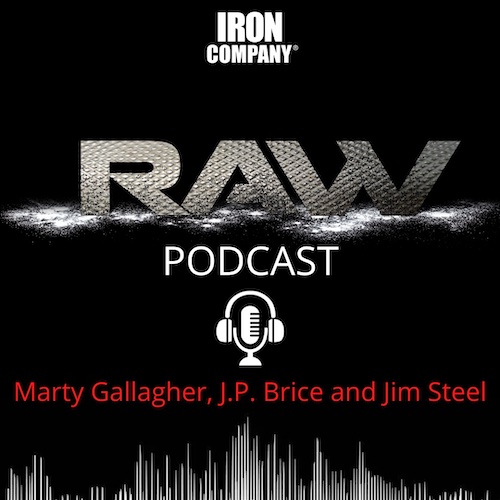
Minimal-Dose Resistance Training - Abstract Impressions
The purpose of life is self-improvement
I am a big fan of First Principles of Movement founder Dr. Craig Liebenson. It takes a fanatic to recognize a fanatic and Craig has the same crazed singularity of purpose about healing and rehabilitation that I have about strength, muscle, and progressive resistance training. Craig is a worldwide traveler, interacting with a wide variety of people. His broad palette of input creates a multidimensional approach to the healing arts. I am his exact opposite. I rarely and begrudgingly travel, living a solitary life in the mountains. I have been in self-imposed artistic quarantine for the past 30 years. My hermetic lifestyle creates a singular approach to life and art. I am an inch wide and a mile deep.
One important aspect of healing and rehabilitation is the ability to strengthen targeted muscles or body parts that happen to be injured. With so many conflicting strength strategies, finding an applicable, appropriate, and effective strength strategy is akin to finding the golden needle in the proverbial haystack. In my world, our strategies routinely obtain outstanding results for regular people using purposefully minimalistic strength training strategies. Our narrowing of the exercise menu and reduced frequency are the epitome of compactness and drew the attention of the healers.
I had a connection and friendship with Craig’s mentor, Stu McGill, the godfather of all things spine related. Craig and I hit it off right away, his sense of humor and endless knowledge won me over immediately. I always pay attention when he posts something. This past week Craig had an interesting post, a 450-word abstract, an overview of a scientific study on benefits of minimalistic resistance training. The abstract inspired me to comment, working my way through the abstract, one concept at a time…the abstract’s premises are stated and my responses are the bullet points…
Minimal-Dose Resistance Training for Improving Muscle Mass, Strength, and Function: A Narrative Review of Current Evidence and Practical Considerations
Jackson J Fyfe, D Lee Hamilton, Robin M Daly
Abstract
Resistance training (RT) is the only non-pharmacological intervention known to consistently improve, and therefore offset age-related declines in, skeletal muscle mass, strength, and power.
- For decades, the recommended elder exercise invariably was moderate intensity cardio exercise. The body does not produce dramatic results in response to low to moderate intensity exercise. i.e., sitting on an exercise bike, spinning two limbs in a small circle at 50-75% of cardio capacity. This physiologic stress is insufficient to cause the body to reconfigure itself. Power training invokes the adaptive response.
Resistance training is also associated with various health benefits that are underappreciated compared with the perceived benefits of aerobic-based exercise. For example, resistance training participation is associated with reduced all-cause and cancer-related mortality and reduced incidence of cardiovascular disease, hypertension, and symptoms of both anxiety and depression.
- Nice to see the additional side-benefits of resistance training spotlighted. We have long known intense strength training is the finest non-pharmacological stress reliever on the face of the planet. To generate a genuine 100% effort, body and mind must unite to deal with the severity of the effort. There can be no multitasking or preoccupation when pushing or pulling on the final reps of a limit set. The stressed Mind is short-circuited.
Despite these benefits, participation in resistance training remains low, likely due to numerous factors including time constraints, a high-perceived difficulty, and limited access to facilities and strength equipment.
- Resistance training protocols invariably suggest 3-6 training sessions per week. Sessions are long, multiple exercises using moderate (relatively speaking) poundage. Our strength strategies were created by world champion athletes: we train once, twice or thrice weekly, maximum intensity, short sessions, 15-45 minutes using a limited menu of exercises. Craig stole my phrase, ‘git the most-est from the least-est.’
Identification of resistance training strategies that limit barriers to participation may increase engagement in RT and subsequently improve population health outcomes.
- We have consistently obtained sensational results confining strength training to once weekly. Four “core lifts” are performed, work up to a single top set in the squat, bench press, overhead press, deadlift. Reps and poundage are predetermined by a 12-week periodized gameplan. If the athlete has the time and energy, power cleans and/or “arm work” are performed at session’s end. Sessions are limited to 60-minutes.
Across the lifespan, declines in strength and power occur up to eight times faster than the loss of muscle mass, and are more strongly associated with functional impairments and risks of morbidity and mortality.
- Better to start the decline from a higher vantagepoint. Better to begin the inevitable decline strong and fight every week: progressive resistance training embraces struggle. To strengthen the body, seek out the sticking points and struggle through them with integrity. The motto for our over-50 lifters is, ‘forget about 10 years ago, improve upon what you did last week.’ Strength is built via ‘creeping incrementalism.’
Strategies to maximize health span should therefore arguably focus more on improving or maintaining muscle strength and power than on increasing muscle mass per se. Accumulating evidence suggests that minimal doses of resistance training, characterized by lower session volumes than in traditional RT guidelines, together with either (1) higher training intensities/loads performed at lower frequencies (i.e. low-volume, high-load RT) or (2) lower training intensities/loads performed at higher frequencies and with minimal-to-no equipment (i.e. resistance 'exercise snacking'), can improve strength and functional ability in younger and older adults.
- ‘Focus on improving muscle strength and power rather than on increasing muscle mass’ Strength training protocols differ radically from bodybuilding protocols. Bodybuilding is divorced from performance. Any strength gain is, for the bodybuilder, an unintended side consequence. Strength training’s overarching goal is the verifiable increase in strength. Any muscle size gain is an unintended side consequence.
Accumulating evidence suggests minimum doses of strength training, lower frequencies combined with increased intensities can improve strength and functional ability.
- Not to be rude – but tell us something we don’t know. Powerlifters discovered in the 1970s that if life and circumstance dictate, a man can train once a week and progress for an entire 12-week cycle. Men that power-trained once a week set world records. The requisite off-set for minimal volume is maximum intensity. Technique is critical: to improve strength, it is not how much you do, it is how hard you do it.
Such minimal-dose approaches to resistance training have the potential to minimize various barriers to participation, and may have positive implications for the feasibility and scalability of RT.
- Continual participation is dependent on tangible results obtained in a reasonable amount of time. Measurable weekly increases in performance, physique and body composition rekindle enthusiasm. Strength increases come quick for the out-of-shape and dramatically and immediately improve the quality of life for the overweight: they can now power their bulk around with greater ease as they whittle down.
In addition, brief but frequent minimal-dose resistance training approaches (i.e., resistance 'exercise snacking') may provide additional benefits for interrupting sedentary behavior patterns associated with increased cardiometabolic risk.
- Frequency is flexible, fluid. The athlete can perform the squat, bench, overhead press, deadlift, plus arms in a single weekly session. Alternately, squat Monday, bench Tuesday, deadlift Wednesday, press overhead Thursday and hit arms Friday. Or squat, bench press and triceps on Monday. and deadlifts, overhead press, and biceps on Thursday. Feel free to switch frequency based on life circumstance.
Compared to traditional approaches, minimal-dose RT may also limit negative affective responses, such as increased discomfort and lowered enjoyment, both of which are associated with higher training volumes and may negatively influence exercise adherence.
- Bodybuilders and Olympic weightlifters routinely spend 90-120 minutes per session and train 4-6 times a week. Any less volume has proven to be less than optimal for those seeking to possess large muscles without any real athletic function. Feel free to devote a large chunk of life to the pursuit of lifting a barbell from the floor to overhead in complex technical exercises that require great skill. We ‘git more for less.’
A number of practical factors, including the selection of exercises that target major muscle groups and challenge both balance and the stabilizing musculature, may influence the effectiveness of minimal-dose resistance training on outcomes such as improved independence and quality-of-life in older adults.
- Factually, your selection of exercises is critical. How you perform the selected exercise is critically important – it is not enough to simply know what exercises you are supposed to do – you must know how to do them. The core four, squat, bench press, deadlift and overhead press, should occupy 80% of your available training time. Do fewer things better.
This narrative review aims to summarize the evidence for minimal-dose resistance training as a strategy for preserving muscle strength and functional ability across the lifespan, and to discuss practical models and considerations for the application of minimal-dose RT approaches.
- We routinely transform trainees using minimal dose, once weekly, resistance training. Men over 40, 50, 60 and 70 are making outstanding gains in performance and physique, all a result of our super low-dose hypertrophic-inducing power training. Much of the success in minimalism depends on the ‘rested effort.’ No strength is built exerting 102% when 79% rested. Strength is built by exerting 102% when 100% rested.
About the Author - Marty Gallagher
As an athlete Marty Gallagher is a national and world champion in Olympic lifting and powerlifting. He was a world champion team coach in 1991 and coached Black's Gym to five national team titles. He's also coached some of the strongest men on the planet including Kirk Karwoski when he completed his world record 1,003 lb. squat. Today he teaches the US Secret Service and Tier 1 Spec Ops on how to maximize their strength in minimal time. As a writer since 1978 he’s written for Powerlifting USA, Milo, Flex Magazine, Muscle & Fitness, Prime Fitness, Washington Post, Dragon Door and now IRON COMPANY. He’s also the author of multiple books including Purposeful Primitive, Strong Medicine, Ed Coan’s book “Coan, The Man, the Myth, the Method" and numerous others. Read the Marty Gallagher Biography for a more in depth look at his credentials as an athlete, coach and writer.



